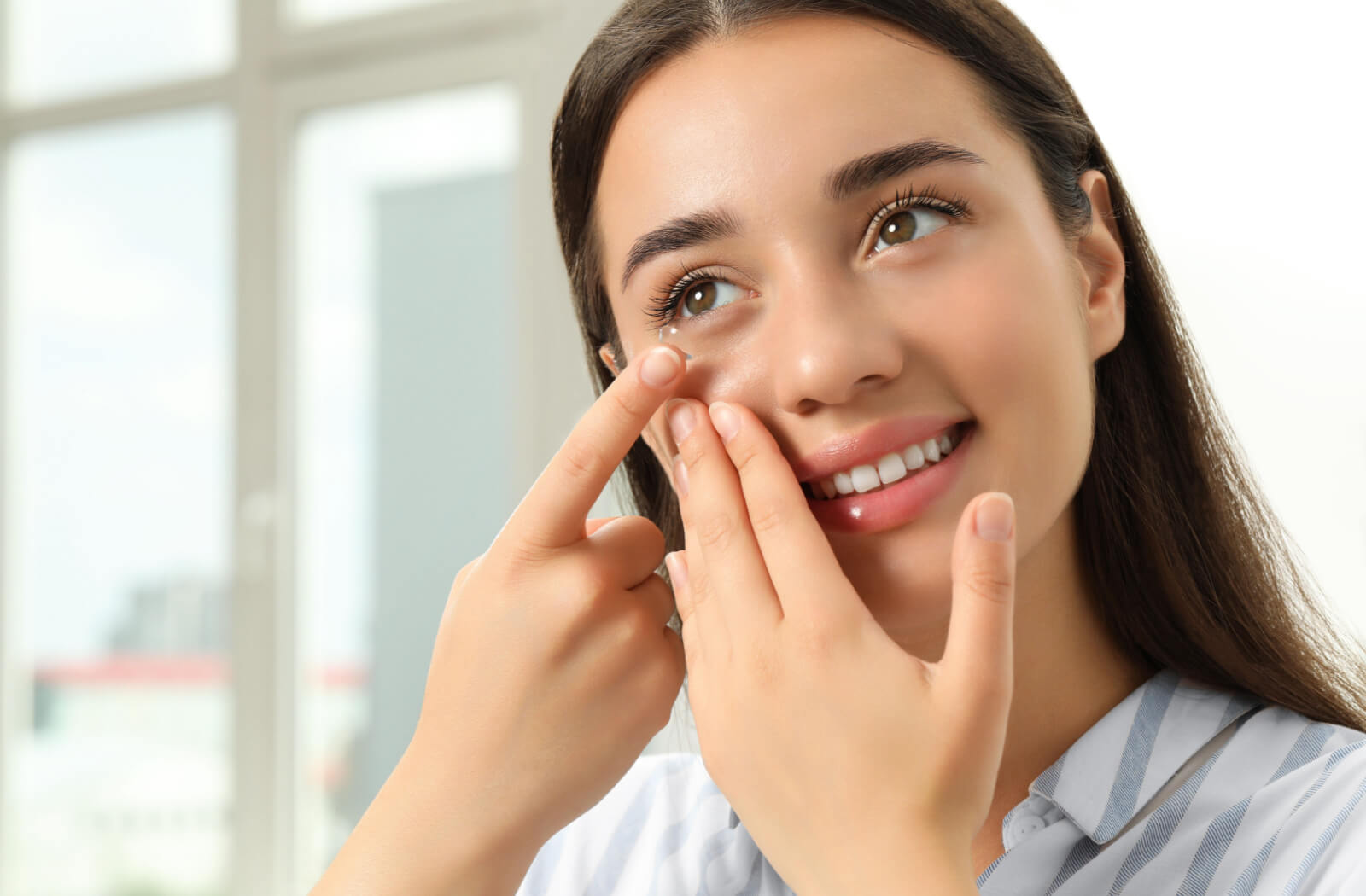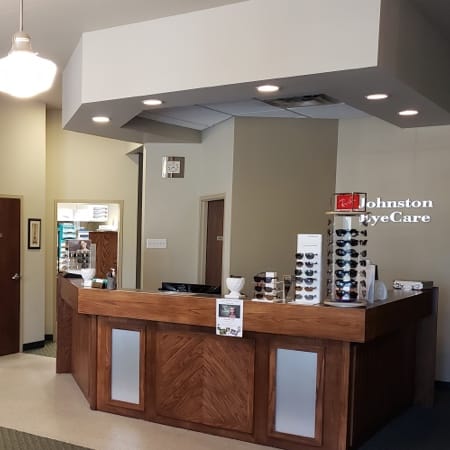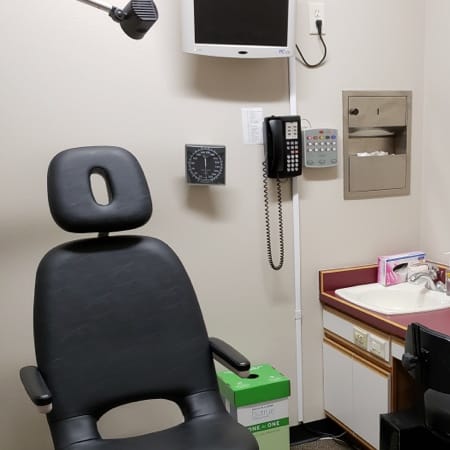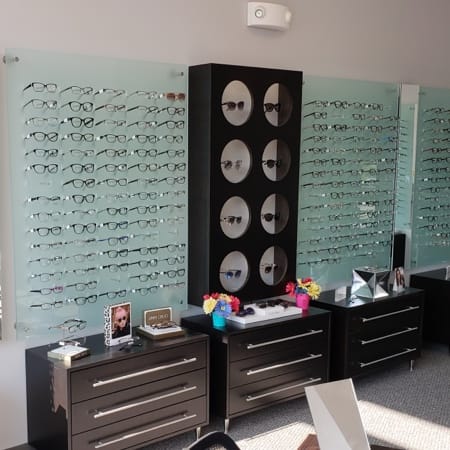
Glaucoma: The Silent Thief of Sight
Glaucoma is a group of eye conditions that lead to progressive damage of the optic nerve. 30 million Americans have glaucoma, and it is the second most common cause of blindness worldwide.
Glaucoma is known as the “silent thief of sight,” as many forms of glaucoma have no warning signs until they’ve caused vision damage. But there is hope! Early detection by your optometrist can help prevent glaucoma progression. Allow our skilled doctors to start safeguarding your sight with a check-up.



Major Types of Glaucoma
There are many types of glaucoma. We have theories about why glaucoma occurs, but there is no known cause. We’ve outlined the 2 most common types of glaucoma below.
Open-Angle Glaucoma
Open-angle glaucoma is the most widespread type of glaucoma, making up 90% of cases. In this type, the drainage angle between the iris and cornea is open and wide, as the name suggests, but significant pressure build-up results when fluid can’t drain from the eye.
Open-angle glaucoma progresses slowly and painlessly. It is often passed down through families.
Angle-Closure Glaucoma
Angle-closure glaucoma (or closed-angle glaucoma) is an eye emergency. It is less common than open-angle glaucoma, but attacks can come on suddenly and painfully.
Pressure in the eye may build up over time as the drainage angle closes and blocks fluid from properly leaving the eye. This leads to pain and intense symptoms when an attack occurs.

Glaucoma Symptoms
Open-angle glaucoma has few symptoms initially, but you may notice blind spots in your peripheral vision as the condition progresses.
The symptoms of acute-angle glaucoma are much more noticeable. An attack includes unignorable symptoms, such as:
- Eye pain
- Severe headache
- Nausea or vomiting
- Very blurry or hazy vision
- Seeing rainbows or halos around lights
- Redness in the white part of the affected eye
- Pupils of different sizes
- Sudden loss of sight
If you notice these symptoms, seek help immediately.

Risk Factors for Glaucoma
Glaucoma can affect anyone, but certain factors can increase your risk:
- African American, Irish, Russian, Japanese, Hispanic, Inuit, or Scandinavian descent
- Over 40
- Family history of glaucoma
- Nearsightedness or Farsightedness
- Poor vision
- Diabetes
- Steroid medications such as prednisone
- Certain drugs for bladder control or seizures or some over-the-counter cold remedies
- Previous eye injuries
- Thin corneas
- High blood pressure, heart disease, or sickle cell anemia
- High eye pressure
It’s critical that everyone is assessed for glaucoma, but if you’re part of a group listed above, please let your optometrist know! Understanding your history gives us a better chance to appropriately monitor glaucoma.

Glaucoma Testing & Managing
Glaucoma Tests
Our optometrists test for glaucoma during a comprehensive eye exam. Glaucoma assessments include:
- Tonometry—measures intraocular eye pressure using numbing drops and a small device or a puff of air
- Ophthalmoscopy—dilation drops are used to dilate the pupil so the optic nerve can be observed using a small magnifying lens
- Perimetry—measuring total field of vision, and helps map peripheral vision
- Gonioscopy—determines the angle where the iris meets the cornea. Numbing drops are applied, and a mirrored contact lens is used to assess the eye
- Pachymetry—a probe called a pachymeter is used to measure the thickness of the cornea (the front of the eye)
Our eye doctors may use several diagnostic methods for testing your eyes for accurate results.
Managing Glaucoma
There are several options for managing glaucoma. Your optometrist may recommend:
A combination of these treatments may also be used to manage glaucoma. Your optometrist will guide you towards the most effective choice for your eyes.

Take Preventative Measures Now
If glaucoma is a concern, our team is ready to help. Glaucoma tests are readily available, and they are generally painless and quick. Please visit us to have your vision assessed soon so we can stay ahead of potential vision loss.


Our Locations

Altoona
- 515-967-4095
- (515) 967-0262
- 301 Center Place SW, Suite D.
- Altoona, IA 50009
Hours
- Monday: 10:00 AM – 6:00 PM
- Tuesday: 9:00 AM – 5:00 PM
- Wednesday: 7:00 AM – 3:00 PM
- Thursday: 9:00 AM – 5:00 PM
- Friday: 9:00 AM – 3:00 PM
- Saturday: Closed
- Sunday: Closed

Johnston
- 515-270-0494
- (515) 270-6463
- 5501 NW 86th St., Suite 500
- Johnston, IA 50131
Hours
- Monday: 10:00 AM – 6:00 PM
- Tuesday: 9:00 AM – 6:00 PM
- Wednesday: 9:00 AM – 3:00 PM
- Thursday: 9:00 AM – 6:00 PM
- Friday: 9:00 AM – 3:00 PM
- Saturday: Closed
- Sunday: Closed

Services

Our Brands






See Our Google Reviews

Our Blog
What Is BlephEx, and How Can It Help Treat Dry Eye?
Dry EyeIf you have blepharitis or dry eyes, your optometrist may suggest a treatment called BlephEx to help. If you are suffering from blepharitis or dry eye syndrome, it is an eye condition that can cause red, swollen, irritated, itchy eyelids, BlephEx treatment may be a suitable option for you. While it can be uncomfortable, blepharitis […]
What Are the Best Contacts for Dry Eye?
Dry EyeThe uncomfortable symptoms experienced with dry eyes can lead to redness and irritation in the eyes. Dry eye disease is a condition that can make even the simplest daily tasks difficult. Fortunately, there are contact lenses available that can help alleviate some of these symptoms. Depending on the cause of your dry eye, your eye […]
Why Does Driving at Night Get More Difficult as You Age?
Eye HealthDriving at night can be difficult at any age, especially if you have a preexisting vision problem. Between glare, difficulty seeing in the dark, or a delayed reaction time, it can be difficult to do so safely. But why does it become more difficult as you age? As you get older, your eyesight naturally gets […]
What Is BlephEx, and How Can It Help Treat Dry Eye?

If you have blepharitis or dry eyes, your optometrist may suggest a treatment called BlephEx to help. If you are suffering from blepharitis or dry eye syndrome, it is an eye condition that can cause red, swollen, irritated, itchy eyelids, BlephEx treatment may be a suitable option for you. While it can be uncomfortable, blepharitis […]
What Are the Best Contacts for Dry Eye?

The uncomfortable symptoms experienced with dry eyes can lead to redness and irritation in the eyes. Dry eye disease is a condition that can make even the simplest daily tasks difficult. Fortunately, there are contact lenses available that can help alleviate some of these symptoms. Depending on the cause of your dry eye, your eye […]
Why Does Driving at Night Get More Difficult as You Age?

Driving at night can be difficult at any age, especially if you have a preexisting vision problem. Between glare, difficulty seeing in the dark, or a delayed reaction time, it can be difficult to do so safely. But why does it become more difficult as you age? As you get older, your eyesight naturally gets […]






